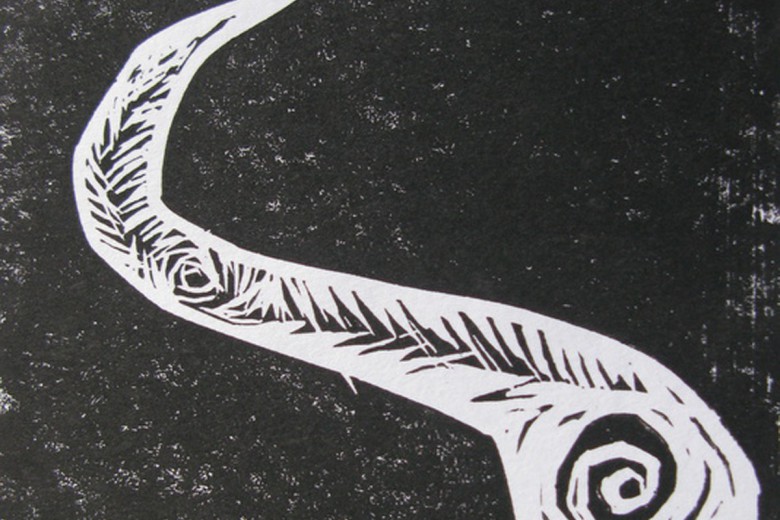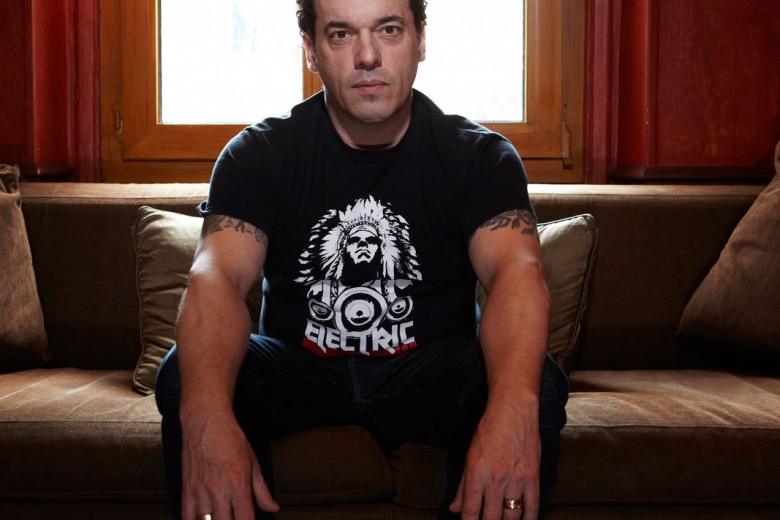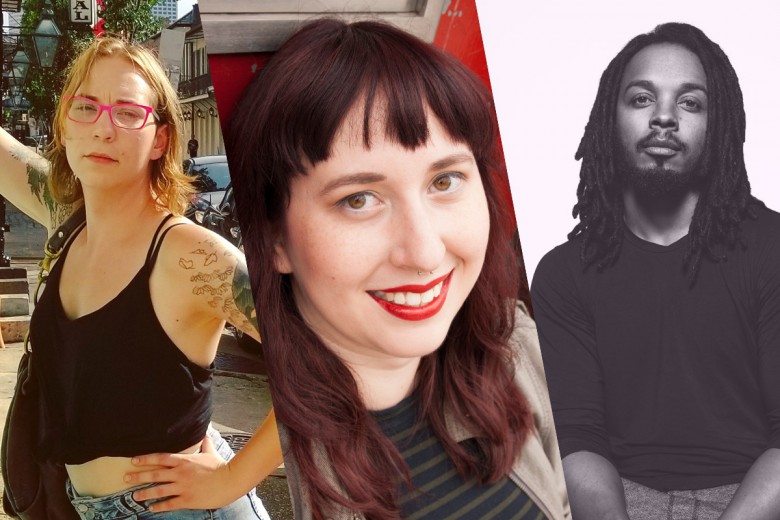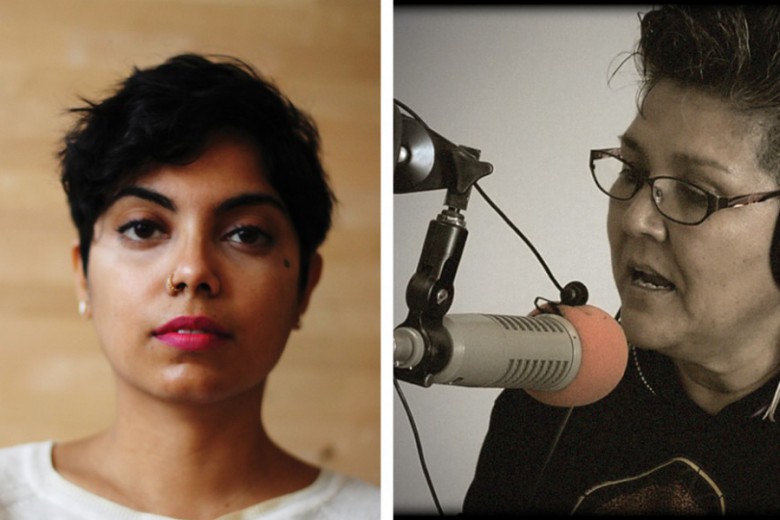I come from a long line of buffalo hunters.
The blood and spirit memories from our ancestral buffalo hunts course through my veins to prepare me for today. I feel the sweat dripping down my forehead. The dust is dry and thick, kicked up by thundering buffalo hooves. I crouch, my legs aching from waiting for the signal from the hunters. I watch them get into position. Some of the hunters are dressed in wolf fur – they are nimble and run bent low. They chase the buffalo toward the hunters that are lined up facing each other. These are the brave ones, chosen by the Elders within our community, for they stand in the path of the buffalo. They jump up and down, waving their buffalo robes to keep the buffalo from veering off the path. The route is wide enough for a small herd of buffalo to flow through, guided toward the jump. The buffalo in the front of the herd realize too late that the ground is no longer beneath their feet. The others behind them push the ones in front to the edge. They quickly tumble off the cliff. It’s too late for any of them to turn back; they are frightened by the wolf-robed hunters in chase behind them.
I saw this buffalo hunt manoeuvre played out many times as a child, although I was never allowed to help; I needed to observe it first to know what to expect. I have now inherited my grandmother’s, my unci’s, obsidian stone. Its black sheen and pointed flint edges make it the perfect tool for its intended deed. This stone is the sharpest tool known to our people and if used properly, it can cut through anything, including the thick hide of a buffalo.
My unci would take me to watch the hunters chase down the buffalo and lead them to the jump, telling me that it was my destiny to eventually help with the buffalo kill at the bottom of the cliff. My mother, my ina, would wait at the bottom of the cliff with her own obsidian stone. She was a skilled buffalo killer and was one of the few trusted to skin buffalo hides. I was to follow in her place when I was old enough. Until then I watched from afar with my unci.
My most prized possession as a child was my obsidian stone. The stone had been carved into a sharp tip and attached to an antler so I could hold it in my hand. When I was younger, I would help my unci as she skinned gophers. Then I graduated to deer, elk, and moose. It was all preparation to be a buffalo hunter and to help with the final kill at the bottom of the jump.
Only the most skilled buffalo hunters were allowed at the hunt. The buffalo robes were the most prized possessions of our people. To kill and skin a buffalo, you must be careful not to make any holes in the fur hide. The robes would be used to keep our people warm on the coldest of winter nights. I feel honoured to be taught these old ways. I was proud to be chosen to help alongside the other hunters. It is humbling to be present when the buffalo spirit takes its last breath – the sacrifice made for our people to continue living.
I have infinite respect for our buffalo brothers and sisters, and I wanted to honour their spirits by making sure they did not suffer needlessly. If the buffalo did not die from the fall, then it was my duty to ensure a just and swift final blow for the sake of its spirit. It was a contract we made with our buffalo brothers and sisters, to ensure their journey to the spirit world was completed as painlessly as possible. We wanted them to journey to the spirit world in a good way, knowing their sacrifice was not made in vain.
My unci and my ina started preparing me when I was a baby, singing the buffalo songs to me. As soon as I could speak, I sang to the buffalo spirit. The dreams didn’t come easy at first. First I heard the rumbling, the loud hummmph and the wind howling as they ran past. At times I would dream I was running with them, darting between them, one of them. Other times I would fly above them, soaring high overhead and watching, learning, wishing to be close. I loved their animal stench, and their fur felt downy near the neck and rugged at their hump – I wished I could stroke their fur. I felt at ease only when in their presence or as I watched them prance. I looked forward to the buffalo hunt each year because it was when they returned to us.
I loved the energy in the air from my people, when we would begin preparing for the hunt. The men would send scouts out to find where the buffalo shook the ground. We would break camp and travel miles to set up camp near the grazing buffalo. The men would prepare themselves mentally, emotionally, and spiritually for each buffalo hunt. The boys wanting to shed their innocence would be called upon to challenge themselves and prepare to hunt their first buffalo. The hunters would paint symbols of their animal or spirit protectors on their bodies with mud and earth paints. Their bows and arrows, parfleche shields, and obsidian spears would be smudged with the smoke of sage and sweetgrass, and the wooden handles painted to ensure their target was found. The women would sing the buffalo song to advise the buffalo to prepare themselves for the sacrifices to be made. We relied on the buffalo for life – they sustained us. We needed the buffalo to nourish and carry us forward for future generations. We had to think of our unborn children, grandchildren, and those yet to come. We needed to be strong for those yet unborn. These ways have been passed down to us through the generations, and our method was always the same to ensure a successful hunt. There was ceremony, but also protocol that we followed. Each hunter knew their place in the hunt, and we laid tobacco down when a kill was complete in order to honour the buffalo’s sacrifice and their life with one of our most valued medicines.
Our community was large and filled with strong men and women, so we hunted in waves. One buffalo could feed 50 people. We would make buffalo pemmican, mixing their meat with berries and animal lard. The pemmican would last us through the winter. The best parts of the buffalo – the tripe, the tongue, the liver – were saved for the babies and the sick Elders. The buffalo noses were saved for the heyokas – the noses would appease the spirits and these healers carried special medicines when they performed the buffalo ceremonies for the people and danced the buffalo dance. Every part of the buffalo was salvaged and used by someone in our village.
_I am older now, and I feel ready to help in my first buffalo hunt. I talk to my Elders and tell my unci and ina that I want to help my people. They tell me I must prepare myself through a purification ceremony. It’s an enormous burden to take the life of a buffalo. We are so connected that when the buffalo spirit leaves the animal, sometimes it wants to take the human spirit with it. So, we have to guard our spirits during the buffalo hunt. _
The women and men sweat separately for this purification ceremony. The songs are different, and the Elders have specific instructions for the men and for the women on their duties during the hunt. We each sing our buffalo songs in the sweat lodges. We pray and sing, pray and sing, and tell stories of previous successful hunts. In between sweat lodge rounds, we joke, and some tell stories of heroic acts or misguided adventures during the hunts. Laughter fills the camp. The children run, jump up and down, and crouch, pretending to be buffalo hunters. They take turns, one being the hunter the other being the buffalo, then switch roles. One day it will be their turn to be on the prairie hunting real buffalo.
I cry hard in the sweat lodge. I am happy, but also sad because I don’t want to take my buffalo brother or sister’s spirit away. I love watching them run free and play with one another. It makes my spirit feel free. It keeps my dreams alive. But the Elders tell me that the buffalo love us and that they want our people to live forever, so they are willing to sacrifice their life and happiness for our survival. It has been that way since the beginning of time. I have to believe I am fulfilling my destiny and that they are too. It is the only way to continue and to take my role in the tribe as a buffalo hunter and robe skinner.
I run with a group of women toward the bottom of the hill as the buffalo tumble and fall from the cliff above. Some buffalo jump up and run, limping away. I have only one chance for my obsidian tool to find its mark, and I must act swiftly to plunge my obsidian into the buffalo’s neck. The stronger men and women pull the heavy animals away from the bottom of the hill. As the other buffalo are dropping from the cliff, we have to be quick and kill intently to ensure our food stays in place. We carry the burden of guaranteeing that we have enough buffalo meat for our people to survive the long, frigid winter on the plains.
I meet my first buffalo brother at the bottom of that cliff. I look into his eyes as he rolls toward me. I know I’ve been waiting for this moment all of my life – but now, faced with the task at hand, I can’t do it. I’m frozen. I look into his eyes and start crying.
Then I hear him. He tells me, “You need to take away my pain. If you are my sister, you will do the right thing. Take your obsidian tool and plunge it into my neck. Do it quickly, as I must leave this earth. I am one of the chosen ones, and I will take my rightful place where I came from. Then you must eat my heart. I will be yours forever and you will be mine forever. I will live on through you. Never forget me. Tell your children and grandchildren about me so that they will honour my spirit after you have passed on to the spirit world. This is what has been told to me by my brothers and sisters. Our destinies are tied together for eternity. Do it! Take your obsidian and strike now!”
I leeleeleelee as loud as I can to give myself strength, and to honour what has been said by my buffalo brother. I remember my unci’s and ina’s words and I leeleeleelee again and again. Four times I leeleeleelee as I strike the spot I know will end his life. I take a deep breath in and out quickly so I do not force the buffalo spirit into my body. I can eat only his heart, and I save some of it for my unci and ina and the other hunters who are watching me, encouraging me. It all happens in a blink, but to me and the buffalo spirit, it lasts a lifetime. I feel the blood entering my blood as I take my initial bites of my first buffalo kill. The heart is still beating.
We will always be one with the buffalo. They are in our blood and we are a part of their spirit. Forever connected, forever bonded. No force alive in the universe will separate us, for as long as the wind blows, the rivers flow, and the sun shines.
I am a buffalo hunter.







